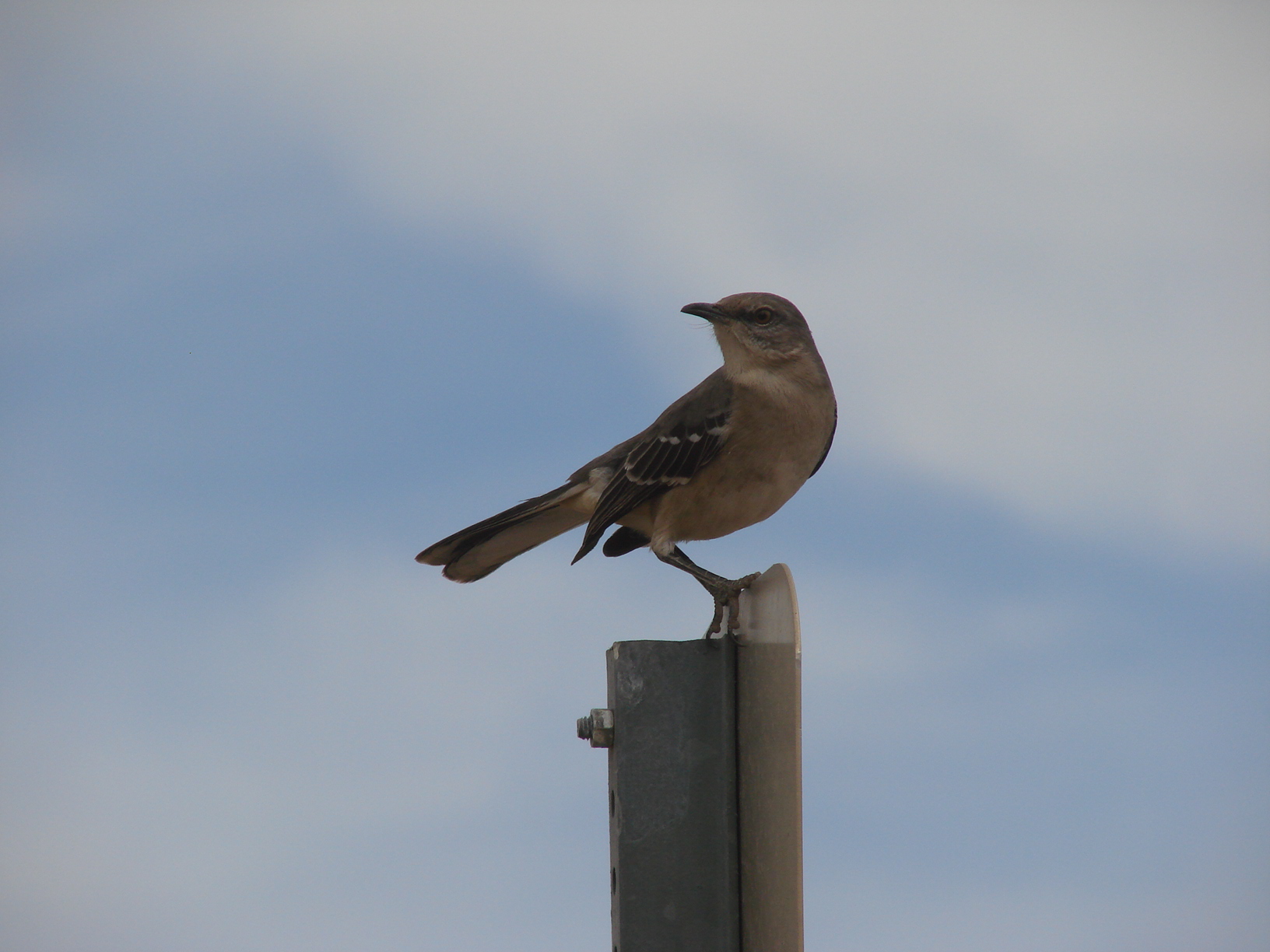Saturday, November 21, 2009
Northern Mockingbird
Years ago waking up early one of the first mornings I lived in graduate student housing, I was shocked and stunned to hear a fellow resident's alarm clock persistently ringing. Was everyone getting up this early--to bird? I dressed and got ready to leave for my early walk, still hearing the alarm clock. Oddly, it got louder and louder the closer I got to the outdoors. Only once I was outside and heading towards the woods did I realize my mistake. No fellow grad student was in sight--but a Northern Mockingbird was perched on a wire opposite my flat and he was singing--or rather ringing--away.
In the intervening years, I have learned that one of the most reliable ways to identify Northern Mockingbirds is, in fact, by their sounds. If you keep hearing car alarms, alarm clocks, cooking sounds (I'm not kidding) as well as several different birds one after another, the chances are that you're in the presence of a Northern Mockingbird. The classic field marks, of course, are the white patches in the primaries and in the tail, but if the bird is perched (most of the time, in my experience!), you can't see these identification marks.
Perched, usually on top of bushes, the Northern Mockingbirds have a good long tail, a small head, a fairly short and thrush-like bill, and an overall slender look (though they can puff themselves up causing them to look much fatter than they are). Usually, you can also see the two white wing bars. In posture they tend to be more horizontal than vertical, and they look alert (rather than sleepy)--probably due to their long legs, though possibly also because they are always on the lookout for their next source of mockery.
Subscribe to:
Post Comments (Atom)


Mockingbirds are favorites of mine. Although sometimes very common the always have character!
ReplyDeleteIn Lima, Peru, we have the Long-tailed Mockingbird
Good Pic. Clear focus.
ReplyDelete